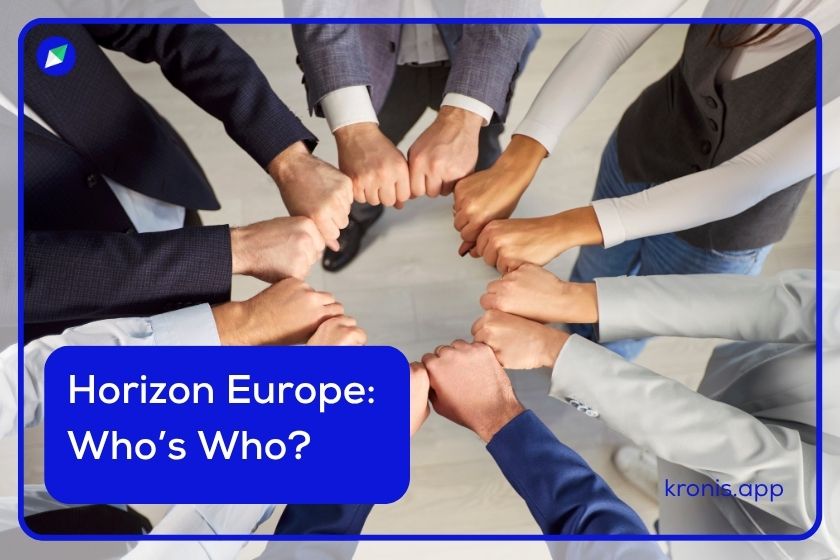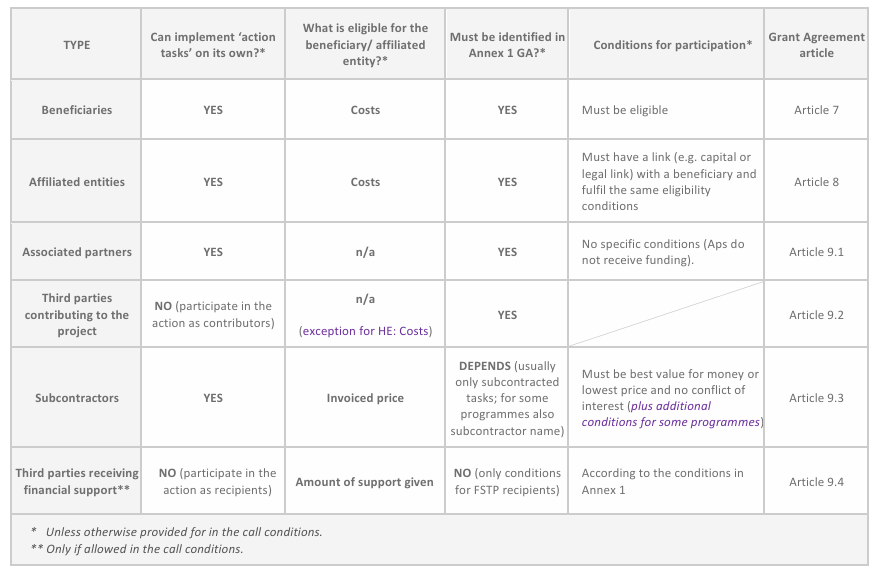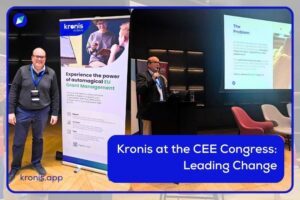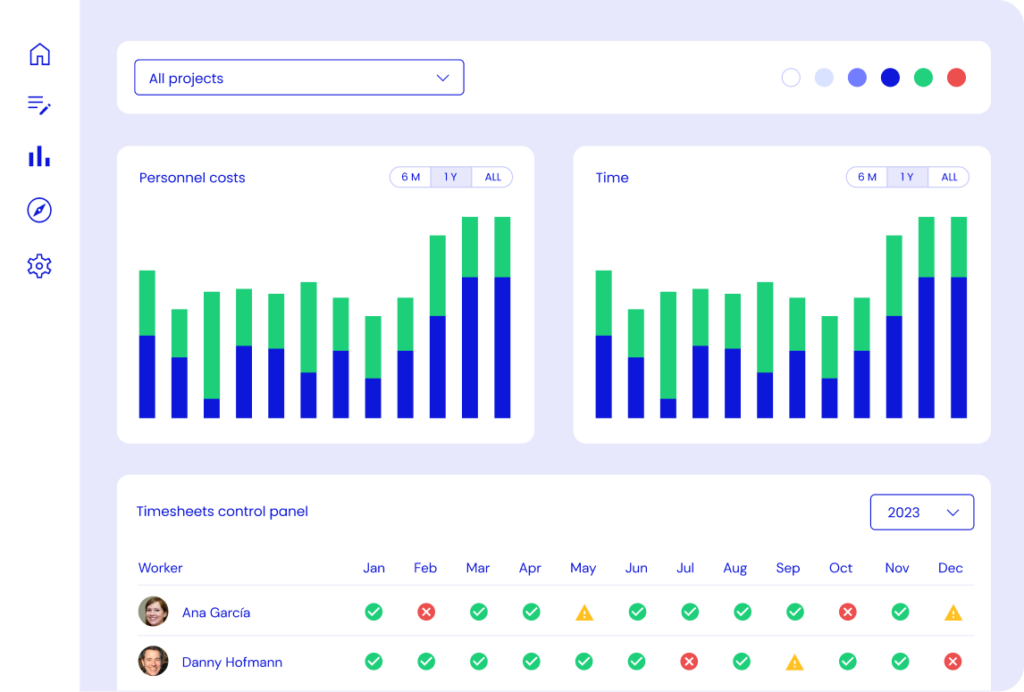A clear, step-by-step guide to understanding, registering, and reporting affiliated entities or linked third parties in Horizon Europe—so you never lose funding over a technicality.

Introduction
Understanding the difference between beneficiaries, linked third parties, and affiliated entities is one of the biggest sources of confusion in Horizon Europe projects.
Getting it right is essential—misreporting or missing information about these entities can lead to rejected costs or funding problems.
If you’re not sure what counts as a linked third party or how to document their work, you’re not alone. This guide breaks down what you need to know, in simple language, with tips for staying compliant and audit-ready.
What Are Affiliated Entities (or Formerly Linked Third Parties) in Horizon Europe?
An affiliated entity — previously known as a linked third party in Horizon 2020 — is an organisation that has a formal, long-term relationship with a main project partner (the beneficiary) and carries out part of the project’s work without signing the Grant Agreement directly with the European Commission.
Key features of an affiliated entity (ex linked third party):
- There is a legal or capital link with the beneficiary (for example, through ownership, control, or a long-standing formal relationship).
- The affiliated entity implements project tasks, providing staff, resources, data, or results as part of the project team.
- It does not sign the Grant Agreement directly, but its role, activities, and budget are described in Annex 1 (Description of Action) and Annex 2 (Estimated Budget).
- Its costs are eligible under the EU grant, but are declared and reimbursed through the beneficiary, not paid directly by the Commission.
- The beneficiary remains legally and financially responsible for the affiliated entity’s work and reporting accuracy.
The affiliated entity must have a validated PIC (Participant Identification Code) in the Funding & Tenders Portal and be linked to the main beneficiary in the Grant Agreement.
In short: An affiliated entity (or former linked third party) is like a close institutional ally of the beneficiary — formally connected, working side by side on project activities, and financially covered through the beneficiary’s grant.
Who’s Who in Horizon Europe Projects?
Before you start reporting or allocating tasks, it’s crucial to understand exactly who is involved in your Horizon Europe project and what role each organisation plays. Getting these roles right will save you time, paperwork, and avoid costly mistakes. Here’s a simple breakdown of the main categories you’ll come across:
Beneficiary
A direct partner in the Grant Agreement. Receives funding directly from the EU and is fully responsible for reporting, management, and delivery of project tasks.
Example:
A university in Spain joins a Horizon Europe consortium as a direct partner. It signs the Grant Agreement, manages its own budget, delivers project tasks, and reports directly to the European Commission.
Linked Third Party (LTP)
See: Affiliated Entity.
This term was used in previous EU programmes (e.g. Horizon 2020) to refer to what Horizon Europe now calls affiliated entities. The rules and conditions are the same.
Affiliated Entity
This is the official term used in Horizon Europe (2021–2027) and replaces “linked third party” from earlier programmes.
An affiliated entity has a legal or capital link with a beneficiary, implements part of the action, and can charge its own costs directly to the grant, even though it does not sign the Grant Agreement. In practice, it is treated very similarly to a beneficiary for eligibility and reporting purposes.
Example:
A university hospital is legally owned by the Spanish university above. The hospital’s research department will run clinical trials as part of the project, but the university is the one that signs the Grant Agreement.
The hospital is a linked third party: its work and costs are reported through the university, but listed separately in the reports.
Subcontractor
Not part of the consortium. Provides a specific service to implement defined action tasks, but has no role in the project’s governance or decision-making.
Example: The consortium hires an independent IT company to build a web platform for the project. This company is not connected to any beneficiary, does not participate in project meetings or decision-making, and is paid a fixed fee for its work.
It is a subcontractor—its costs are justified as “subcontracting” and follow different eligibility and reporting rules.
Associated Partner
An organisation that contributes to the project by implementing specific tasks without receiving EU funding.
Associated partners do not sign the Grant Agreement and cannot claim costs from the EU grant.
Their contribution is described in Annex 1 (Description of Action), but their expenses are covered from their own resources or other sources.
The main beneficiary remains responsible for coordinating with them.
Example:
A research institute from Latin America collaborates in a Horizon Europe project by testing solutions in pilot sites.
The institute contributes data and expertise but does not receive EU funding; it participates as an associated partner.
Third Parties in Horizon Europe
Not all third parties are the same — the term covers two distinct roles under the Grant Agreement:
1️⃣ Third Parties Contributing to the Project (Article 9.2)
These organisations provide resources, data, equipment, or staff to support a beneficiary’s work without being part of the consortium.
They do not implement tasks independently and normally do not receive EU funding, except in specific in-kind contribution cases allowed by the grant.
Their contribution must be clearly described in Annex 1 (and in Annex 2 if it involves eligible costs).
Example:
A private company allows a university beneficiary to use its testing facilities free of charge to validate prototypes.
The company is not part of the consortium, and its support is recorded as an in-kind contribution from a third party contributing to the project.
2️⃣ Third Parties Receiving Financial Support (Article 9.4 – Cascade Funding / FSTP)
These are external organisations that receive funding indirectly through the project, under a Cascade Funding or Financial Support to Third Parties (FSTP) scheme.
They do not implement the project’s core tasks, but instead receive small grants, prizes, or vouchers defined in Annex 1.
Beneficiaries are responsible for selecting, monitoring, and reporting on them according to the agreed conditions.
Example:
A Horizon Europe project launches an open call to support start-ups developing digital health solutions.
The selected start-ups each receive €60,000 to develop their prototypes — they are third parties receiving financial support under Article 9.4.
This table gives an overview of the different kinds of EU grants participants and indicates cost eligibility (not exhaustive):

When Can You Involve an Affiliated Entity?
You can only include an affiliated entity in your Horizon Europe project if there is a genuine, formal connection between your organisation (the beneficiary) and the entity.
This link must already exist before the project and is usually proven through legal ownership, control, or a long-term, documented relationship—for example, being part of the same research group, public institution, or corporate structure.
Key moments and requirements:
- At proposal stage:
If you already know that a partner institution will support you as an affiliated entity, you must include it in your project proposal. Their name, role, tasks, and estimated budget should be clearly described in Annex 1 (Description of Action) and Annex 2 (Estimated Budget) of your Grant Agreement. Example: Your university wants to involve its own technology transfer office or an affiliated hospital for clinical trials.
- During the project:
Sometimes, you realise later that a linked third party’s involvement is necessary (for example, to cover new tasks or provide missing expertise). In these cases:
- You must notify the European Commission and update the Grant Agreement to formally add the new affiliated entity. You must justify why its participation is needed and provide legal proof of the existing link with the beneficiary.
- Legal proof is essential:
The connection must be supported by official documents—such as statutes, ownership certificates, collaboration agreements, or internal regulations.
Verbal or informal links are never enough.
- Affiliated entities are not for convenience:
You cannot use an affiliated entity simply to move costs between organisations, avoid procurement rules, or act as a subcontractor. The European Commission may check the nature of the relationship during audits to confirm it meets the eligibility criteria.
- All tasks and costs must match the Grant Agreement: Any activity or expense declared for an affiliated entity must correspond exactly to what is described in Annex 1 and Annex 2. Unplanned tasks or unrelated costs are not eligible.
Bottom line: Always plan and justify the inclusion of affiliated entities in advance, and keep your documentation updated. If in doubt, contact your National Contact Point or request formal approval from the Commission before starting any work.
How to Register, Manage, and Report Affiliated Entities
1️⃣ Registration
- Document the legal link:
Gather official documents that prove the relationship between your organisation and the linked third party (e.g. statutes, ownership certificates, formal agreements).
- Include in the Grant Agreement:
When preparing your project, list every linked third party—by name, role, and tasks—in Annex 1 (Description of Action) of your Grant Agreement.
- Register in the Funding & Tenders Portal:
Each affiliated entity must have a validated PIC (Participant Identification Code) and be linked to the main beneficiary’s profile in the EU’s Funding & Tenders Portal.
2️⃣Management During the Project
- Track activities and costs separately:
All work done by the affiliated entity must be documented independently from the beneficiary, using dedicated timesheets, cost records, and deliverable lists.
- Keep supporting documents up to date:
Store timesheets, invoices, proofs of payment, deliverables, and correspondence related to the affiliated entity.
- Maintain clear communication:
Ensure each affiliated entity understands its reporting obligations, deadlines, and documentation requirements.
3️⃣ Reporting
- Include affiliated entities in every periodic and final report: Their costs and activities appear in separate sections of the financial and technical reports—under the responsibility of the beneficiary.
- Be transparent: Clearly describe what the affiliated entity did, the results achieved, and how costs were calculated and justified.
- Stay audit-ready: Keep all documentation well organised so it can be easily shared in case of audits or information requests from the European Commission.
Pro tip:
Using a digital tool like Kronis makes it much easier to collect, track, and report everything—so you never lose documents or miss a deadline.
Final Thought
Managing affiliated entities (or former linked third parties) may seem complex at first, but with good planning, clear communication, and the right tools, it becomes routine.
The key is to document everything from the start, involve each partner transparently, and ensure every activity and cost matches what’s described in your Grant Agreement.
Remember: staying organised and audit-ready isn’t just about passing checks—it’s about protecting your project’s funding and reputation.
With smart digital solutions like Kronis, you can keep every entity, document, and deadline under control, so your team can focus on delivering real impact.

Equipment & Direct Costs in Horizon Europe: How to complete the financial statement

Driving Collaboration and Impact: Kronis Showcased at the CEE Congress for Research Managers


